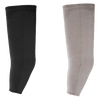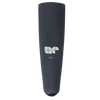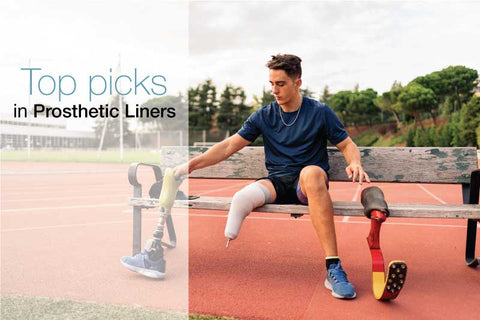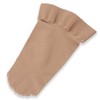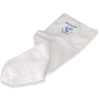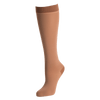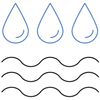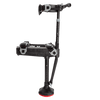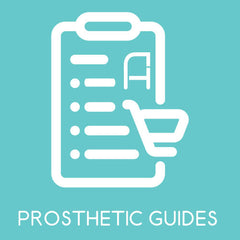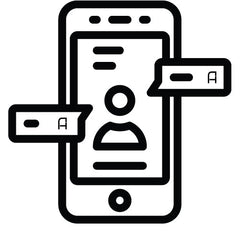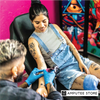After Electrocution, Patient Finds New Strength With Bionic Hand
Reading Time: 5 minutes
In March 2022, 23-year-old Christian Arreola simply wanted a glimpse of the ocean from the rooftop of his parents’ house in Rosarito, Mexico. But while he was climbing the wet rafters, he inadvertently stepped under a live electrical wire. In an instant, a powerful surge of 13,000 volts coursed through his body, causing him to lose consciousness and leaving severe burns on half of his body, including his chest, back, legs, and right arm.

Arreola awoke five days later in a medically induced coma at UC San Diego Health’s Hillcrest Medical Center, only to discover that he had lost his right arm. In an interview with UC San Diego Today, he vividly recalled the uncertainty he felt that he would ever regain consciousness as he signed the paperwork to be put into a coma and again to amputate.
Over the course of his recovery, he spent one month in the ICU and three months at the hospital’s Regional Burn Center, undergoing more than 20 surgeries, which included burn debridements and revisions to his residual limb.
Saving What’s Left: A Surgeon’s Purpose
Initially, doctors contemplated amputating up to Arreola’s shoulder due to severe muscle burns. However, Katharine Hinchcliff, a hand surgeon and assistant professor of surgery at UC San Diego, opted for a different approach, aiming to preserve as much of the residual limb as possible.
Each time Arreola woke from surgery, he learned that Hinchcliff had removed damaged tissue while carefully preserving every viable portion of his lower arm. She believed that retaining his elbow and a significant length of his arm would greatly enhance the functionality of any future prosthetic.
In an interview with UC San Diego Today, she emphasized the importance of trauma amputation surgeries being guided by the ultimate goal of functionality. Although this approach may require additional procedures, the long-term benefits for prosthetic use are invaluable.
Thanks to Hinchcliff’s careful strategy, Arreola retained sufficient arm length and elbow mobility—essential components for effective use of a myoelectric prosthetic.
From Despair to Determination
When Jennie McGillicuddy, an occupational therapist, first met Arreola towards the end of his inpatient care, a sense of hope began to blossom. She introduced him to rehabilitation concepts centered around achievable goals, such as carrying an iPad, tying his shoes, grasping a water bottle, and shaking someone’s hand.
The early mobility exercises proved crucial. As McGillicuddy guided him through shoulder, elbow, and residual limb control exercises across various planes, Arreola discovered a newfound sense of purpose and support. He expressed that Jennie motivated him and helped cultivate a resilience within him to explore his potential moving forward.
After being discharged, he committed to weekly outpatient sessions for over a year. Before fitting him for a prosthesis—an essential process that required his incision to heal completely over three months—the focus shifted to rebuilding his residual limb strength and coordination.
Meeting the Bionic Hand
When Arreola finally received his Psyonic myoelectric prosthetic hand, he said he felt a mix of excitement and nerves. He had doubts about whether the bionic hand would work for him.
The prosthesis operates by using electrical signals from his remaining muscles, which are detected by electrodes within the socket, and it drives movement through a microchip interface. Arreola can control and customize various grips using a smartphone app, allowing him to program his most frequently used movements directly into the prosthetic hand. These selected movements correspond to specific muscle activations, which he has honed under McGillicuddy’s guidance.
A pivotal moment during a therapy session was when Arreola confidently extended his carbon-fiber arm and offered McGillicuddy a proper handshake without crushing her hand, she recalled.
Beyond Therapy: Passion, Purpose, and Performance
Recovered and motivated, Arreola fully embraced fitness and competition. Within just five months, he was back to bench-pressing, lifting 150 pounds with one arm. He now competes in local CrossFit events and plans to participate in adaptive competitions in Texas this September.
In addition to his athletic pursuits, Arreola is contributing to future innovations by testing prototypes for Psyonic. He recently showcased a prosthesis at San Diego Comic-Con, demonstrating the potential of advanced technology.
Lighting the Way for Others
Arreola also plays a vital role in inspiring others by visiting burn-injured patients at the Regional Burn Center, sharing his journey to instill hope and demonstrate what is possible. His gratitude for the nurses, therapists, and doctors who supported him drives his desire to give back.
Arreola’s story stands as a powerful testament not only to human resilience but also to how targeted surgical decisions, expert rehabilitation, and advanced prosthetic technology can come together to rebuild lives. What began as a near-tragic accident has transformed into an inspiring journey of innovation, courage, and empowerment.
Related reading:
The Battle for Mobility: Insurance Denials and Prosthetic Access
Coping with Limb Loss Takes Time and Open Communication
Improving Neural Control of Upper-Limb Prostheses

